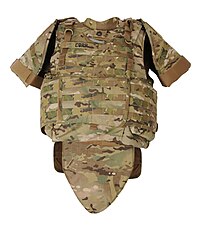
Photo from wikipedia
Abstract In this paper, the penetration resistance potential of hybrid-fiber-reinforced high-strength concrete (HFRHSC) is investigated at fiber content of 2%. 12 batches of HFRHSC materials with various hybridizations were manufactured… Click to show full abstract
Abstract In this paper, the penetration resistance potential of hybrid-fiber-reinforced high-strength concrete (HFRHSC) is investigated at fiber content of 2%. 12 batches of HFRHSC materials with various hybridizations were manufactured for comparative analyses of hybridization. The uniaxial compression tests were conducted to determine the 7-day and 28-day compressive strength indicating that the steel fiber outperforms the polypropylene fiber and polyvinyl alcohol fiber in improving compressive strength. The sequent multi-impact penetration tests for each mixture HFRHSC target were carried out with projectile impact locations in equilateral triangle shape whereas the penetration response was evaluated in terms of depth of penetration (DOP) and crater area. The experimental results indicate that the penetration resistance improvement potential of steel fiber reinforced concrete goes moderately ahead of that of the polypropylene or polyvinyl alcohol fiber reinforced concrete. Besides, the DOP caused by multi-impact implies the penetration resistance is remarkably decayed by the first impact while the second penetration poses much less deterioration. Moreover, cavity expansion analysis together with impact damage were applied to the DOP analytical model for HFRHSC multi-impact penetration whereby the target resistance term corresponding each impact was achieved via best fitting. The accumulated damage is also found to be dependent on the hybridization.
Journal Title: Construction and Building Materials
Year Published: 2019
Link to full text (if available)
Share on Social Media: Sign Up to like & get
recommendations!